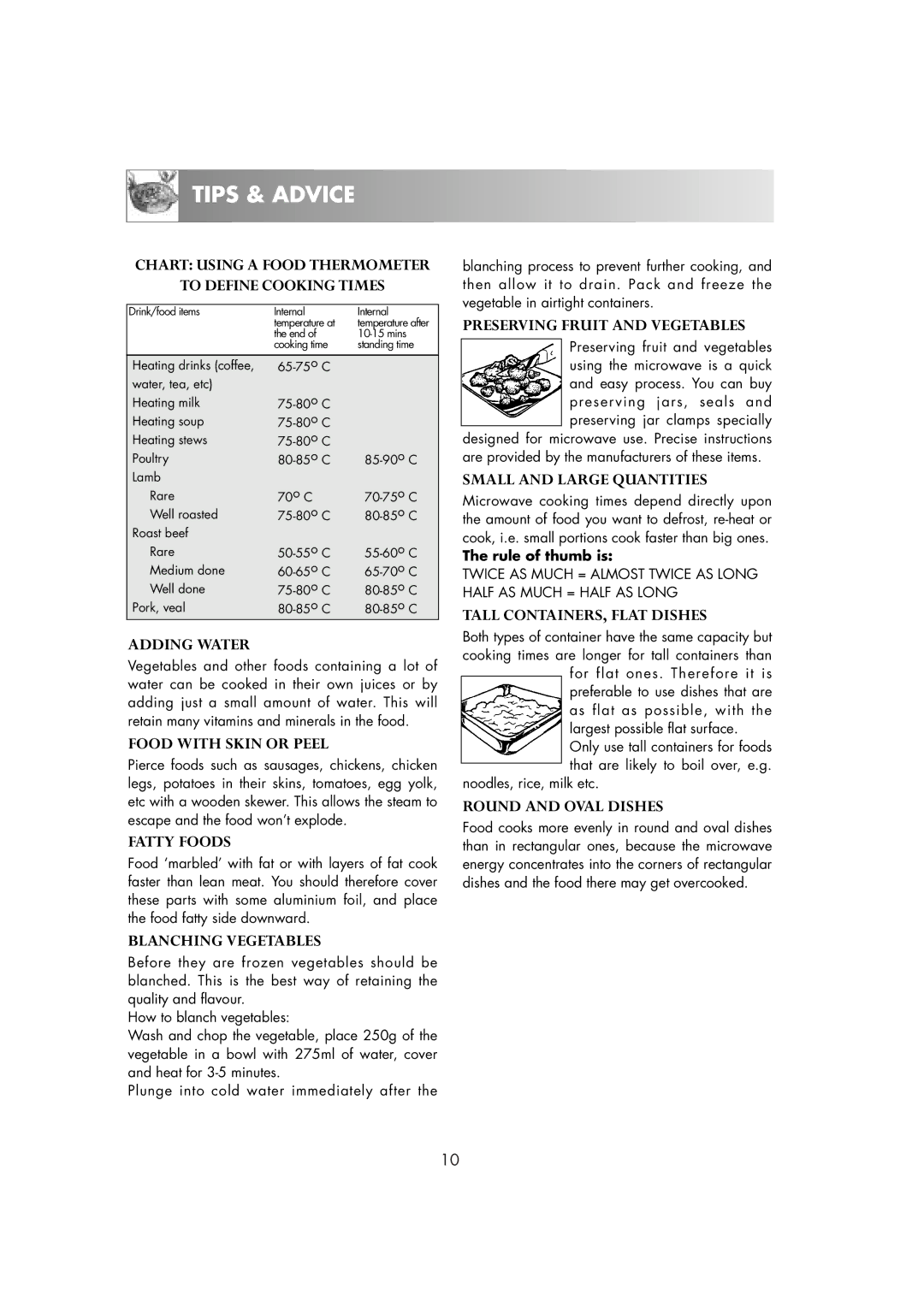


 TIPS & ADVICE
TIPS & ADVICE

































CHART: USING A FOOD THERMOMETER
TO DEFINE COOKING TIMES
Drink/food items | Internal | Internal |
| temperature at | temperature after |
| the end of | |
| cooking time | standing time |
|
|
|
Heating drinks (coffee, |
| |
water, tea, etc) |
|
|
Heating milk |
| |
Heating soup |
| |
Heating stews | ||
Poultry | ||
Lamb |
| |
Rare | 70o C | |
Well roasted | ||
Roast beef |
| |
Rare | ||
Medium done | ||
Well done | ||
Pork, veal |
ADDING WATER
Vegetables and other foods containing a lot of water can be cooked in their own juices or by adding just a small amount of water. This will retain many vitamins and minerals in the food.
FOOD WITH SKIN OR PEEL
Pierce foods such as sausages, chickens, chicken legs, potatoes in their skins, tomatoes, egg yolk, etc with a wooden skewer. This allows the steam to escape and the food won’t explode.
FATTY FOODS
Food ‘marbled’ with fat or with layers of fat cook faster than lean meat. You should therefore cover these parts with some aluminium foil, and place the food fatty side downward.
BLANCHING VEGETABLES
Before they are frozen vegetables should be blanched. This is the best way of retaining the quality and flavour.
How to blanch vegetables:
Wash and chop the vegetable, place 250g of the vegetable in a bowl with 275ml of water, cover and heat for
Plunge into cold water immediately after the
blanching process to prevent further cooking, and then allow it to drain. Pack and freeze the vegetable in airtight containers.
PRESERVING FRUIT AND VEGETABLES
Preserving fruit and vegetables using the microwave is a quick and easy process. You can buy preser ving jars, seals and preserving jar clamps specially
designed for microwave use. Precise instructions are provided by the manufacturers of these items.
SMALL AND LARGE QUANTITIES
Microwave cooking times depend directly upon the amount of food you want to defrost,
The rule of thumb is:
TWICE AS MUCH = ALMOST TWICE AS LONG HALF AS MUCH = HALF AS LONG
TALL CONTAINERS, FLAT DISHES
Both types of container have the same capacity but cooking times are longer for tall containers than for flat ones. Therefore it is preferable to use dishes that are as flat as possible, with the
largest possible flat surface. Only use tall containers for foods that are likely to boil over, e.g.
noodles, rice, milk etc.
ROUND AND OVAL DISHES
Food cooks more evenly in round and oval dishes than in rectangular ones, because the microwave energy concentrates into the corners of rectangular dishes and the food there may get overcooked.
10
